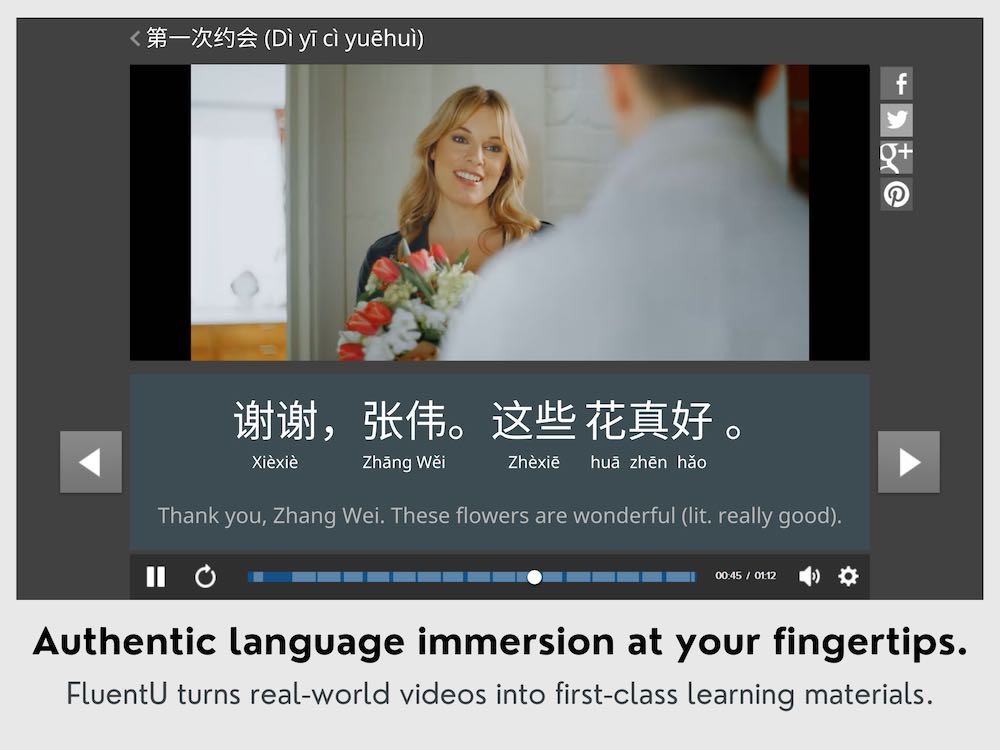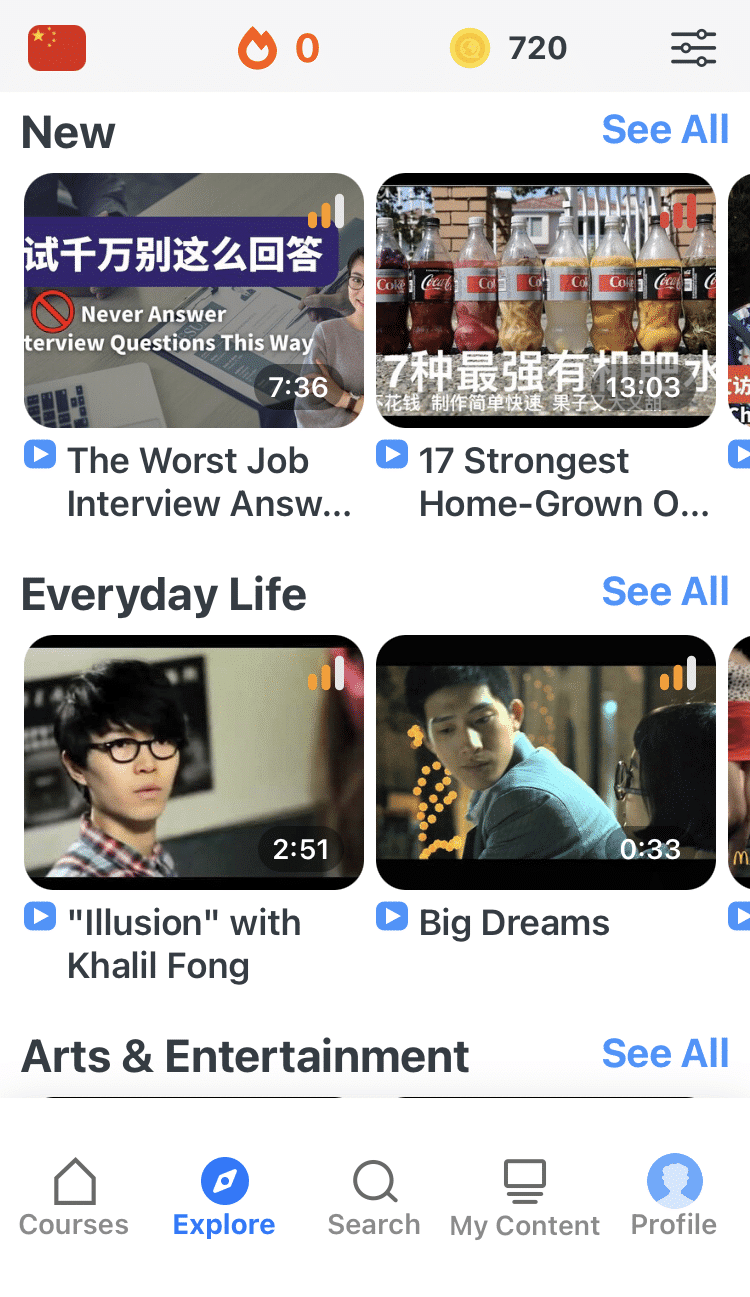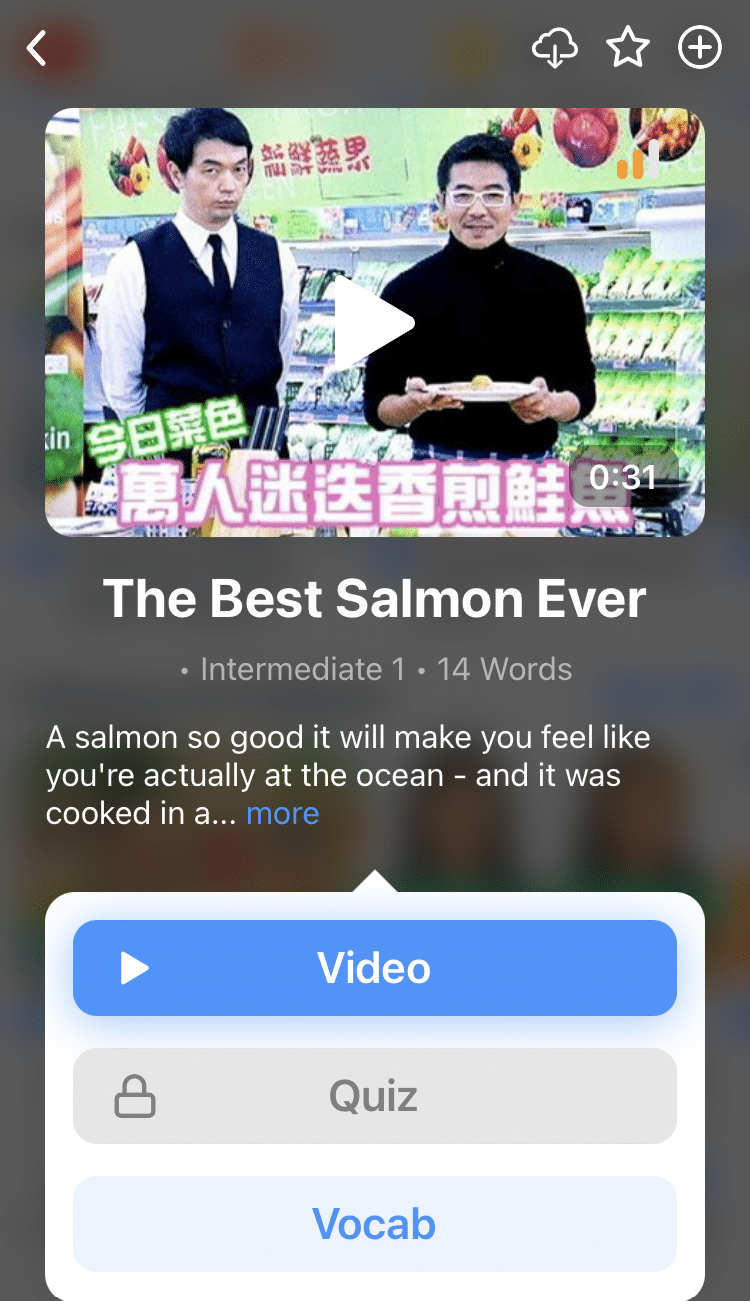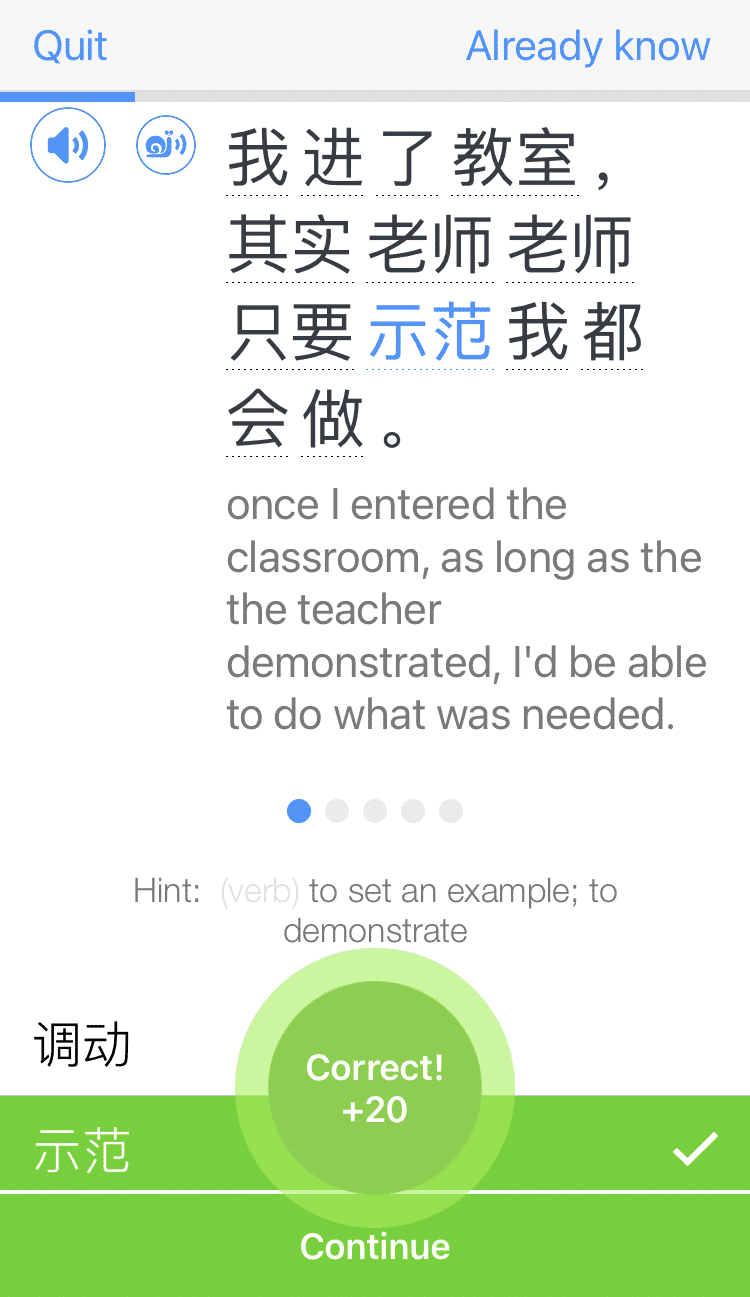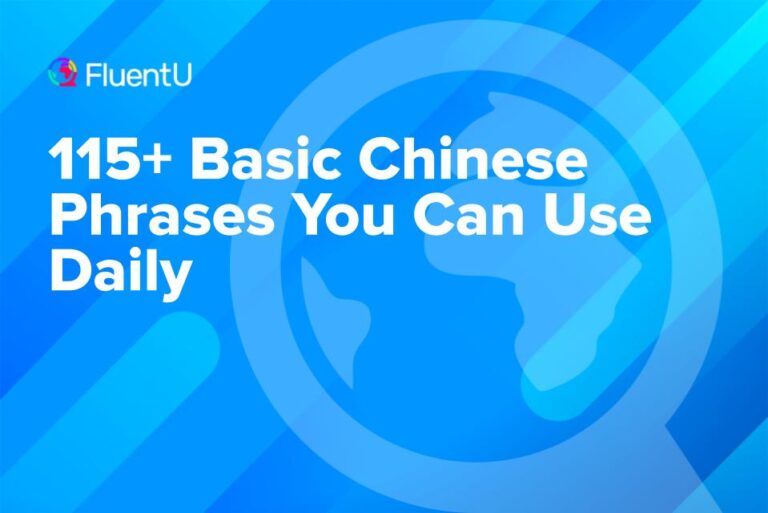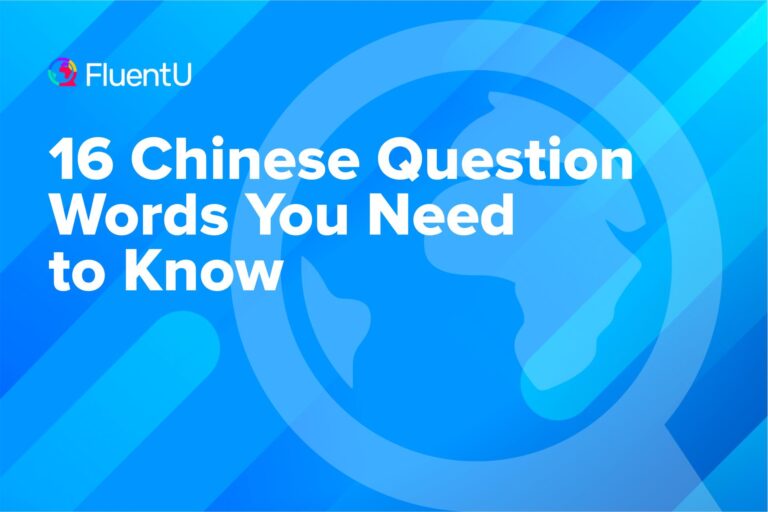Be the Barista’s Favorite: How to Perfectly Order Coffee in Chinese

Let’s face it: you and the baristas are both busy when you walk into a coffee shop. Neither of you have time to play charades for every item on the menu. If you want your drink quick—and made the way you like it—you’ll need to master ordering coffee in Chinese.
From sizes to add-ons, I’ll walk you through how to order coffee in Chinese—no matter how special or complicated your drink order is.
Download: This blog post is available as a convenient and portable PDF that you can take anywhere. Click here to get a copy. (Download)
Basic Phrases for Ordering Coffee in Chinese
Baristas are under an immense amount of pressure to perfect every single order in a timely manner. They probably don’t have time to explain everything on the menu if it’s all in Mandarin.
The best thing that you can do is to not freak out when you see that the menu is Chinese. You want to show that you respect your barista’s time and hard work. You can do this by starting with a greeting, rather than going straight into your order.
If you think about it, you almost sound like you’re demanding a cup of coffee instead of asking when you simply say 我要一杯咖啡。 (wǒ yào yī bēi kā fēi.) — I want a cup of coffee.
So be polite and start off with a greeting! The basic formula of a coffee order with a greeting (and minus cup sizes, add-ons and customizations, which we’ll cover later) is as follows:
你好! 我要一杯咖啡。
(nǐ hǎo! wǒ yào yī bēi kā fēi.)
Hello! I would like a cup of coffee.
Obviously, a statement like this isn’t sufficient, but for all intents and purposes, use this as the foundation in building your order. We’ll use this formula as a jumping off point throughout the rest of this post. Use the FluentU program to learn this and other sentence structures. You can also the program to hear the vocabulary from this post in context through entertaining videos.
FluentU takes authentic videos—like music videos, movie trailers, news and inspiring talks—and turns them into personalized language learning lessons.
You can try FluentU for free for 2 weeks. Check out the website or download the iOS app or Android app.
P.S. Click here to take advantage of our current sale! (Expires at the end of this month.)
In the meantime, here are several phrases you’re likely to hear in a Chinese coffee shop and ones you can use:
| Chinese | Pinyin | English |
|---|---|---|
| 您要什么? | nín yào shén me? | What would you like? |
| 我想点…… | wǒ xiǎng diǎn... | I'd like to order… |
| 可以给我……吗? | kě yǐ gěi wǒ... ma? | Can you give me... please? |
| 请问,您有……吗? | qǐng wèn, nín yǒu... ma? | Excuse me, do you have...? |
| 请问您要几份? | qǐng wèn nín yào jǐ fèn? | How many would you like? |
| 一共(是)...... | yī gòng (shì)... | The total is... |
| 微信还是支付宝? | wēi xìn hái shì zhī fù bǎo? | WeChat or Alipay? |
| 我找你零钱 | wǒ zhǎo nǐ líng qián | I'll get your change |
| 谢谢光临。 | xiè xiè guāng lín. | Thank you for coming. |
When being asked if you’re paying with WeChat or Alipay, you’ll have to specify if you’re using an international card (国际卡 — guó jì kǎ — international card). This is because baristas will have to use a different POS machine.
Now that you know some basic phrases for ordering, here are a few common words associated with coffee:
| Chinese | Pinyin | English |
|---|---|---|
| 喝咖啡 | hē kā fēi | To drink coffee |
| 煮咖啡 | zhǔ kā fēi | To brew coffee |
| 浓 | nóng | Strong |
| 淡 | dàn | Weak |
| 热 | rè | Hot |
| 冷 | lěng | Cold |
| 甜 | tián | Sweet |
| 苦 | kǔ | Bitter |
| 咖啡豆 | kā fēi dòu | Coffee beans |
| 咖啡杯 | kā fēi bēi | Coffee cup |
| 咖啡壶 | kā fēi hú | Coffee pot |
| 咖啡机 | kā fēi jī | Coffee machine |
Types of Coffee and Drinks in Chinese
If a regular coffee isn’t where you get your usual caffeine fix, here are the translations of other standard beverages commonly served across coffee chains, cafes and restaurants:
| Chinese | Pinyin | English |
|---|---|---|
| 冰咖啡 | bīng kā fēi | Iced coffee |
| 热咖啡 | rè kā fēi | Hot coffee |
| 拿铁 | ná tiě | Latte |
| 浓缩咖啡 | nóng suō kā fēi | Espresso |
| 卡布奇诺 | kǎ bù jī nuò | Cappuccino |
| 摩卡 | mó kǎ | Mocha |
| 美式咖啡 | měi shì kā fēi | Americano |
| 玛奇朵 | mǎ qí duǒ | Macchiato |
| 星冰乐 | xīng bīng lè | Frappuccino |
| 冷萃 | lěng cuì | Cold brew |
| 茶 | chá | Tea |
| 澳白 | ào bái | Flat white; Australian white |
| 科尔塔多 | kē ěr tǎ duō | Cortado |
Depending on the coffee chain, they may offer other types of teas. If you want the iced version of any of the above, just add the word “iced,” which is 冰 (bīng), in front of the drink name. Here are a couple of examples of iced drinks:
冰拿铁 (bīng ná tiě) — Iced latte
冰红茶 (bīng hóng chá) — Iced black tea
How to Choose a Size for Your Coffee in Chinese
As we’ve already established, the simple sentence “I would like a cup of coffee,” or whatever drink you’re ordering, doesn’t specify everything you might want. The next detail you’ll need to provide is the size of your drink. The size should be inserted before your actual drink of choice.
Thus, the formula would look like this: Greeting + I would like a + cup size + drink.
In sentence form, that would look like this:
你好! 我要一杯大杯咖啡。(nǐ hǎo! wǒ yào yī bēi kā fēi.) — Hello! I would like a large coffee.
Most coffee places will follow the standardized sizing, which are small ( 小 — xiǎo), medium ( 中 — zhōng) and large ( 大 — dà). This is actually easier than a lot of coffee shops with English menus, where sizes like “regular” can vary between small and medium, depending on the establishment.
Of course, Starbucks has its own system for cup sizes, so let’s take a look at what each cup translates to in Chinese.
| Chinese | Pinyin | English |
|---|---|---|
| 小杯 | xiǎo bēi | Short |
| 中杯 | zhōng bēi | Tall |
| 大杯 | dà bēi | Grande |
| 超大杯 | chāo dà bēi | Venti |
How to Customize Your Coffee Order in Chinese
Like a bit of sweetness with your coffee? Need an extra shot of espresso to kickstart your morning? Or maybe you need soy milk because you’re lactose intolerant or are a vegan. (Unlike in other countries where you may be judged for this milk substitute, soy milk is very popular in China. So if that’s the how you want to customize your order, by all means, go for it!)
Flavors, add-ons and customizations are perhaps the most important part of the formula for those that have specific orders in mind, whether it be due to taste or some sort of food allergy.
Building onto the formula we currently have, the flavor would be inserted in between the size and the drink name, while the add-on would follow, making the sentence structure more or less like so: Greeting + I would like a + cup size + flavor + drink + with/without + add-on(s).
Note: “With/without” in this context would be translated as 加 (jiā)/不加 (bù jiā).
Each coffee shop will have its own flavors of coffee drinks and syrups, but let’s discuss some of the common ones:
| Chinese | Pinyin | English |
|---|---|---|
| 香草 | xiāng cǎo | Vanilla |
| 榛子 | zhēn zi | Hazelnut |
| 薄荷 | bò hé | Peppermint |
| 巧克力 | qiǎo kè lì | Chocolate |
| 焦糖 | jiāo táng | Caramel |
| 草莓 | cǎo méi | Strawberry |
| 拉茶 | lā chá | Chai tea |
| 绿茶 | lǜ chá | Green tea |
| 抹茶 | mǒ chá | Matcha |
As for add-ons and custom orders, here are some phrases that may be of use to you:
| Chinese | Pinyin | English |
|---|---|---|
| 鲜奶油 | bù yào xiān nǎi yóu | Whipped cream |
| 双份浓缩 | shuāng fèn nóng suō | Double shot of espresso |
| 牛奶 | niú nǎi | Milk |
| 低脂牛奶 | dī zhī niú nǎi | Low fat milk |
| 燕麦奶 | yàn mài nǎi | Oat milk |
| 豆浆 | dòu jiāng | Soy milk |
| 杏仁奶 | xìng rén nǎi | Almond milk |
| 糖 | táng | Sugar |
| 奶精 | nǎi jīng | Creamer |
| 低咖啡因 | dī kā fēi yīn | Decaf |
How to Order “For Here” or “To Go” in Chinese
Most cashiers will assume that you’re having your coffee at their establishment unless you specify that you’re on the run.
To indicate whether it’s for here or to go, here’s how you would form your sentence: Greeting + I would like a + cup size + flavor + drink + with/without + add-on(s) + for here/to go.
So after you’ve given your order, you can say either:
在这里用 (zài zhè lǐ yòng) — For here
打包 (dǎ bāo) — To go
There are a couple of Chinese translations for “to go” and “takeaway,” and different cities in China will often use one more than the other.
The translation above is used commonly in the mainland, but shouldn’t be used in Hong Kong since it means, “to wrap a dead body.”
Last but not least, when all is said and done, don’t forget to end with 谢谢 (xiè xiè), which means, “Thank you!”
Example Coffee Orders in Chinese
Let’s take a look at a few possible drink orders, shall we?
你好! 我要一杯中杯冷萃, 额外加一份豆奶,打包带走。谢谢!
(Nǐ hǎo! Wǒ yào yī bēi zhōng bēi lěng cuì, é wài jiā yī fèn dòu nǎi, dǎ bāo dài zǒu. Xiè xiè!)
Hello! I would like a tall/medium cold brew with soy milk to go. Thank you!
你好! 我要一杯大杯咖啡, 额外加一份低脂牛奶,在这里喝。谢谢!
(Nǐ hǎo! Wǒ yào yī bēi dà bēi kā fēi, é wài jiā yī fèn dī zhī niú nǎi, zài zhè lǐ hē. Xiè xiè!)
Hello! I would like a grande/large coffee with low-fat milk for here. Thank you!
你好! 我要一杯超大杯焦糖玛奇朵打包。谢谢!
(Nǐ hǎo! Wǒ yào yī bēi chāo dà bēi jiāo táng mǎ qí duǒ dǎ bāo. Xiè xiè!)
I would like a venti/extra-large iced caramel macchiato to go. Thank you!
你好! 我要一杯小杯拉茶拿铁在这里喝。谢谢!
(Nǐ hǎo! Wǒ yào yī bēi xiǎo bēi lā chá ná tiě zài zhè lǐ hē. Xiè xiè!)
Hello! I would like a short/small chai tea latte for here. Thank you!
And that’s how you order coffee in Chinese like a local! Once you’ve got your usual order down, put yourself to the test and take a group order.
It’s challenges like these that’ll really immerse you in the language and culture.
Of course, it may be a while before you can perfect all your different beverage orders, but remember that one of the keys to speaking better Mandarin is to not be too hard on yourself. Just keep practicing, and you’ll get there eventually.
Download: This blog post is available as a convenient and portable PDF that you can take anywhere. Click here to get a copy. (Download)
And One More Thing...
If you want to continue learning Chinese with interactive and authentic Chinese content, then you'll love FluentU.
FluentU naturally eases you into learning Chinese language. Native Chinese content comes within reach, and you'll learn Chinese as it's spoken in real life.
FluentU has a wide range of contemporary videos—like dramas, TV shows, commercials and music videos.
FluentU brings these native Chinese videos within reach via interactive captions. You can tap on any word to instantly look it up. All words have carefully written definitions and examples that will help you understand how a word is used. Tap to add words you'd like to review to a vocab list.
FluentU's Learn Mode turns every video into a language learning lesson. You can always swipe left or right to see more examples for the word you're learning.
The best part is that FluentU always keeps track of your vocabulary. It customizes quizzes to focus on areas that need attention and reminds you when it’s time to review what you’ve learned. You have a 100% personalized experience.
Start using the FluentU website on your computer or tablet or, better yet, download the FluentU app from the iTunes or Google Play store. Click here to take advantage of our current sale! (Expires at the end of this month.)
